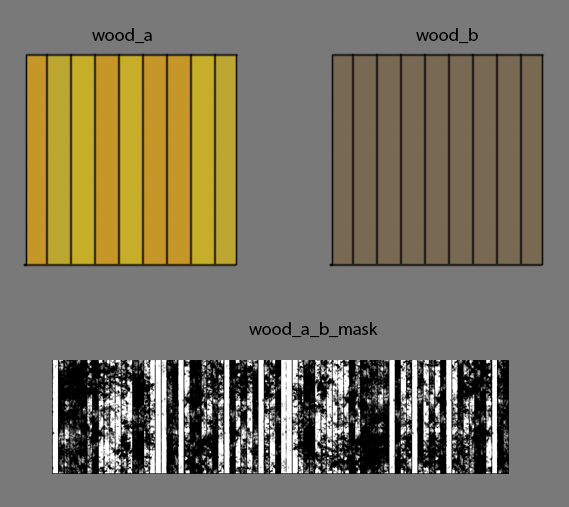This is not ideal for games because of the sheer size (4k x 1k) of the texture. It isn't that modern hardware can't handle the resolution, just inefficient.
On an open-world project (not indie) I recently worked on, we use masks to vary the type of wood (and other materials), to break repetition and get the same kind of variation you want. To recreate your wood surface but our techniques, we would would use something like these textures:
wood_a (diffuse, normal, spec)
wood_b (diffuse, normal, spec)
wood_a_b_mask (black & white)
wood_a and wood_b are two tilable kinds of wood, one painted and the other just raw wood. the magic comes from the mask texture, which is a lower resolution "representation" of which planks are painted wood and which are raw, along with some noise/grunge/chips in the mask to make it more natural.
The key here is that your masks needs to be able to be tiled differently than your woods. Here's a quick illustration that will hopefully help.

In this example for every time the mask is tiled horizontally, the square wood textures are tiled 4 times. The resolution of the mask is also different, but because this just masks between two high resolution wood textures, it doesn't matter so much. It of course means the game engine needs a material that uses masks and flexible tiling/scaling between textures.
I worked on several games that use these kinds of materials. It worked for us, because with just a few different kinds of wood textures and a couple black & white masks loaded in memory, we can create dozens of different wood materials with different levels of paint chipping, different colors, etc. A lot of creativity can be had with shared textures and masks!
But it also means that if your scene has a single wood object, then this technique probably isn't as efficient.
 Developer
Developer Art
Art (Moderator: JWK5)Best way to create non tileable texture
(Moderator: JWK5)Best way to create non tileable texture Developer
Developer Art
Art (Moderator: JWK5)Best way to create non tileable texture
(Moderator: JWK5)Best way to create non tileable texture
